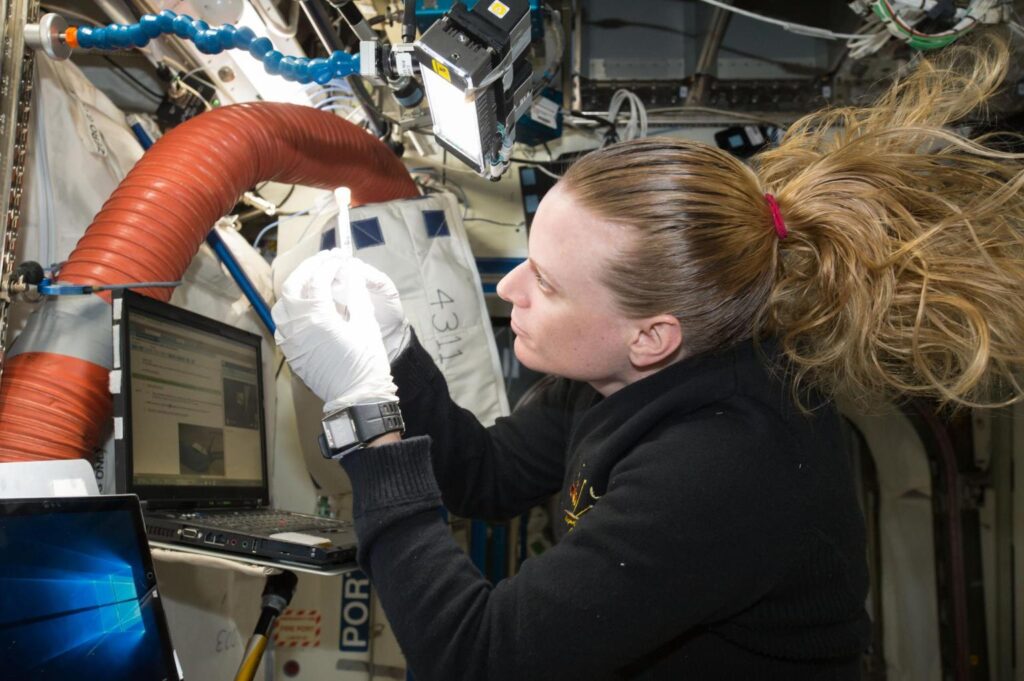
November marks a significant milestone in space exploration as the International Space Station (ISS) celebrates 25 years of continuous human presence. Since the first crew arrived on November 2, 2000, the ISS has become a symbol of international collaboration and human ingenuity, hosting over 4,000 research investigations and technology demonstrations. These efforts have not only advanced our understanding of space but also brought tangible benefits to life on Earth.
The ISS has provided a unique microgravity environment where researchers have conducted experiments impossible to replicate on Earth. This has led to breakthroughs across various scientific disciplines, pushing the boundaries of what is possible and sparking new discoveries.
Advancing Space Exploration
The ISS serves as a crucial proving ground for technologies essential for future missions to the Moon and Mars. NASA and its partners have developed and tested navigation, communication, and radiation shielding technologies aboard the station, which are now being integrated into spacecraft for these ambitious missions.
Robotic systems, such as autonomous assistants and robotic surgeons, have been tested on the ISS, promising to expand the range of medical procedures available during long-duration spaceflights. Additionally, astronauts have successfully used 3D printing to fabricate tools and parts from recycled materials, paving the way for on-demand repairs in space.
“Humanity’s push to the Moon and Mars begins with discoveries in low Earth orbit. Every innovation aboard the station helps to advance NASA’s Artemis and other exploration initiatives,” said a NASA spokesperson.
Sustaining Life Beyond Earth
As NASA prepares for the Artemis missions and beyond, sustaining life in space is more critical than ever. The ISS has been instrumental in developing life support systems capable of recycling up to 98% of water, a necessity for long-duration missions.
Astronauts have successfully grown over 50 plant species in space, including tomatoes and chili peppers, providing insights into sustainable food production for future missions. Research on crew health has also yielded valuable data on how space affects the human body, guiding strategies to maintain astronaut performance and health.
“By growing food, recycling water, and improving medical care in space, NASA is paving the way for future long-duration missions to the Moon and Mars,” stated a NASA official.
Impact on Earth
The research conducted on the ISS not only propels humanity further into space but also addresses pressing health issues on Earth. The station’s microgravity environment has facilitated breakthroughs in understanding diseases like cancer and Alzheimer’s by revealing how microgravity alters cellular functions.
Advancements in 3D bioprinting have led to the creation of human tissue structures, marking a significant step toward manufacturing organs in space for transplants on Earth. Additionally, the ISS has provided critical data for emergency responses to natural disasters, demonstrating its value as an observation platform.
“Microgravity research is moving us closer to manufacturing human organs in space for transplant and revealing new ways to fight serious illnesses,” noted a leading scientist involved in ISS research.
Understanding the Universe
The ISS offers scientists an unparalleled vantage point to study the universe. Data from X-ray telescopes on the station have improved our understanding of collapsing stars and black holes, while studies of antimatter and dark matter are bringing us closer to understanding the universe’s hidden components.
Researchers have also created and studied the fifth state of matter on the ISS, unlocking new quantum pathways that could transform technology both on Earth and in space.
“Research aboard the space station is helping us unravel the deepest mysteries of our universe, from the smallest quantum particles to the most powerful cosmic explosions,” said a prominent astrophysicist.
Enabling Global Access to Space
Since its inception, the ISS has opened doors for private companies, researchers, and students worldwide, fostering a new era of global collaboration in space exploration. The station has become a launchpad for the commercial space economy, hosting hundreds of experiments from commercial companies and enabling private astronaut missions.
CubeSats deployed from the ISS have allowed students and innovators to test scientific demonstrations in space, inspiring the next generation of scientists and engineers. The station has welcomed over 285 crew members from more than 25 countries, underscoring its role as a symbol of international cooperation.
“The space station has enabled the space economy, where commercial research and technology demonstrations are shaping a new global marketplace,” commented a space industry expert.
As the ISS looks to the future, its legacy of discovery and innovation continues to inspire and propel humanity forward, both in space and on Earth.







